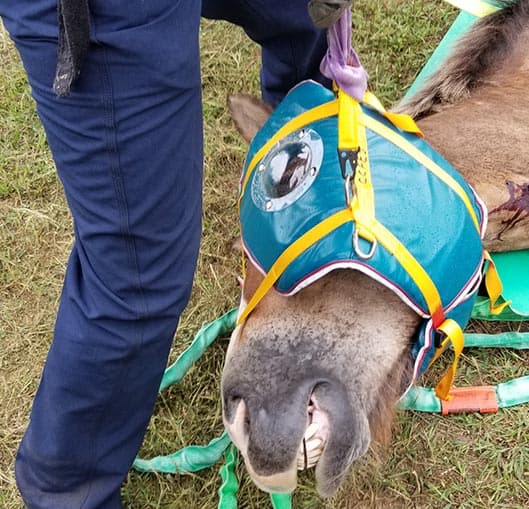
Are Christmas Decorations Poisonous to Horses?
Find out what might happen if your horse eats that wreath hanging on his stall door.

Find out what might happen if your horse eats that wreath hanging on his stall door.

Learn how to keep horses and humans safe by storing your supplies and equipment properly.

The cross-country phase of eventing comes with risk, but new research aims to keep horses and riders safer.

Luke Bass, DVM, MS, Dipl. ABVP, explains how various restraint options work best.

A veterinarian offers tips on how you can prepare in advance to keep your horse calm despite the noise and sight of festive fireworks.

While each horse is different, here are some common behavioral signs that can help you tell if your horse is happy, sick, or painful, as well as keep you safe.

Standardized helmet tests measure the equipment’s reaction to hitting a steel anvil, but equestrians usually fall on softer, less rigid surfaces.

Are you using heated water buckets or troughs this winter? Stay safe with these tips.

A survey found riders’ helmets are often too old, well exceeding their manufacturer-stated expiration dates.

As you consider ways you can help your foal—and his dam—through the weaning process, examine proven methods based on research findings to formulate a plan.

British researchers analyzed 4,000 road incidents between cars and ridden or handled horses and found drivers’ passing too closely, speeding, and road rage all contributed to conflicts and injury.

Researchers found many people accept that working with horses is dangerous—especially more experienced riders or those working with horses for financial gain.

Although horse sports—and three-day eventing in particular—carry inherent risks to both horse and rider, significant safety efforts in recent years have led to safer competitions, according to two sports medicine specialists.

Slow feeders and haynets offer many benefits for horses, such as metered forage intake, but can also create safety issues. Here are solutions to common challenges.

A new sensor cap designed just for helmet wearers is giving feedback that could not only improve fit but also lead to better diagnostics and treatment when riders fall.

Vets and handlers can take these steps to keep horses restrained during recovery or rescue.
Stay on top of the most recent Horse Health news with
"*" indicates required fields